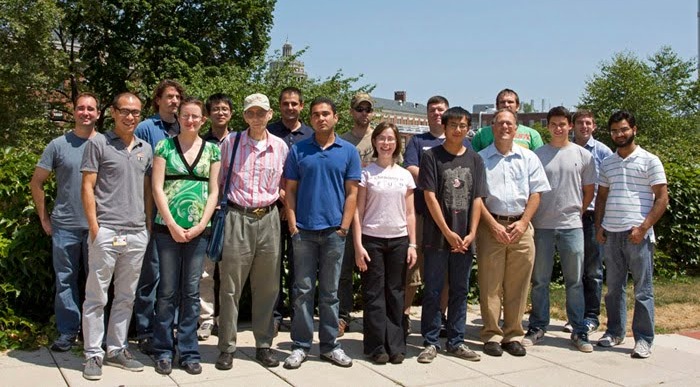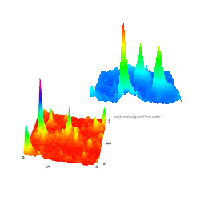Collaborators:
Shaw Chen (Chemical Engineering)Yongli Gao (Physics) Zhenan Bao (Stanford University) Mary Galvin (University of Delaware) Paula Hammond and Tim Swager (MIT) Ching Tang (Chemical Engineering) Ming Yan and Thomas Huser (Lawrence Livermore Labs) Marty Abkowitz and Wunshain Fann (Inst. Atomic and Molecular Physics) |

Organic Electronics
Our primary research is in the areas of Organic Electronics and Biomolecular Sensing. The vision behind our studies of Organic Electronics is to understand easily processed organic materials for inexpensive applications as the active element in light-emitting diodes, thin film transistors and photovoltaic devices. We study the science of light emission, charge photogeneration and charge transport that underpins future applications of polymers in flexible displays, electronic paper and organic solar cells. The techniques we use span the range from transient spectroscopy of excited state relaxation to thermally stimulated luminescence of charge transport traps to charge modulation spectroscopy in devices. We work with novel materials such as self-organizing chiral conjugated oligomers, dendritic side group polymers and water soluble emissive polymers.

Biosensing
In the biomolecular sensor area, the vision behind our work is development of molecular sensing techniques with biomedical significance that do not involve fluorescent or radioactive tagging of analytes. Our research is closely tied to the recently established Center for Future Health whose mission is to develop technology that will assist people in taking more responsibility for their own health. We are developing new optical schemes based on reflectivity, Raman spectroscopy and radiative engineering of fluorescent decay rates. Coupled to our sensing effort, we are studying the basic science of single molecule Raman and fluorescence spectroscopy.